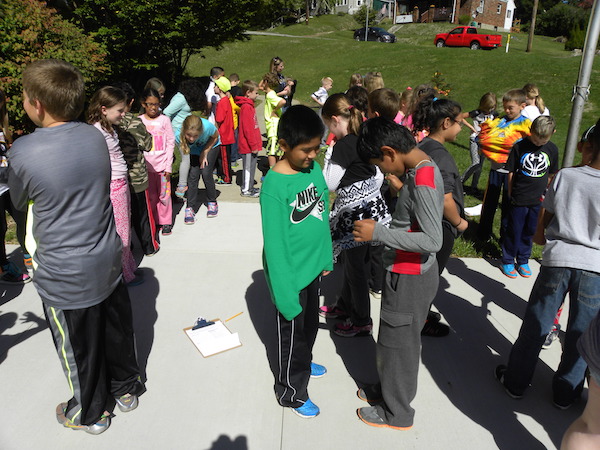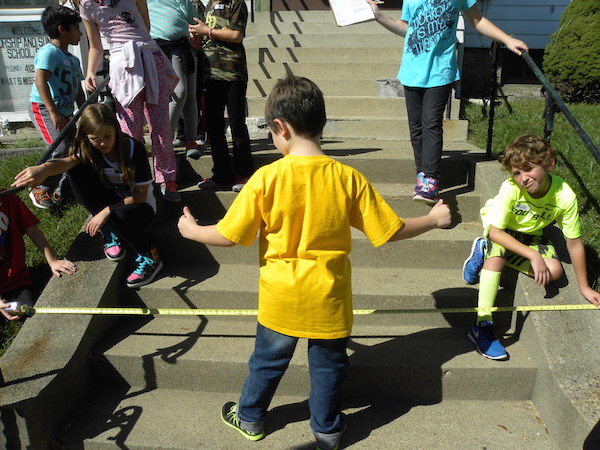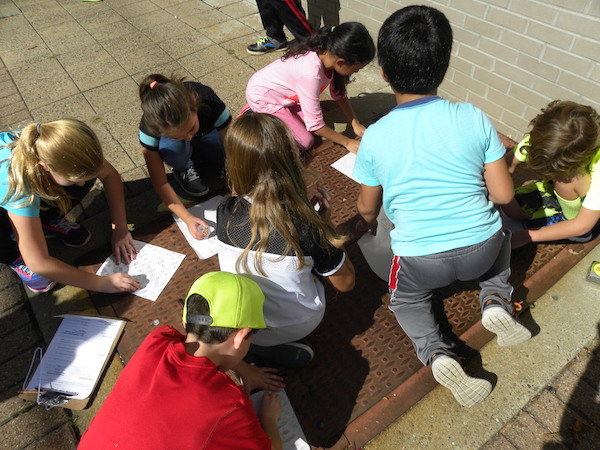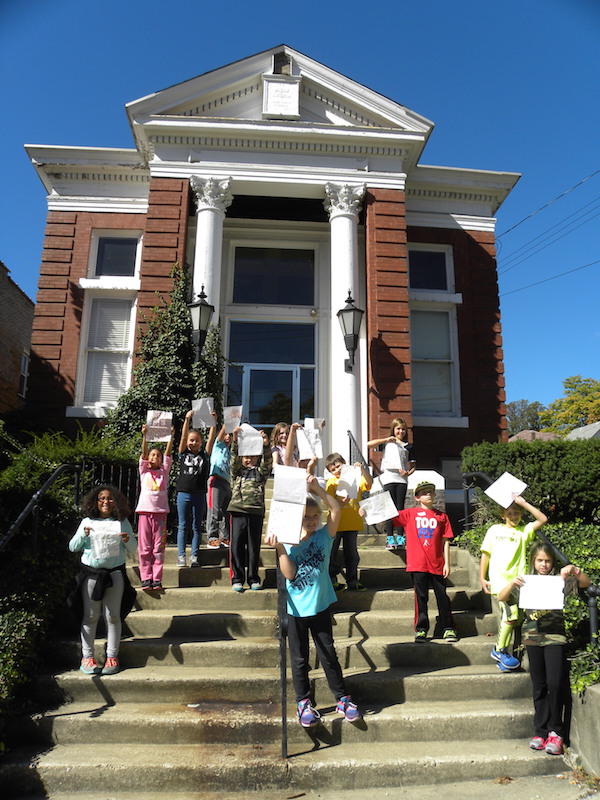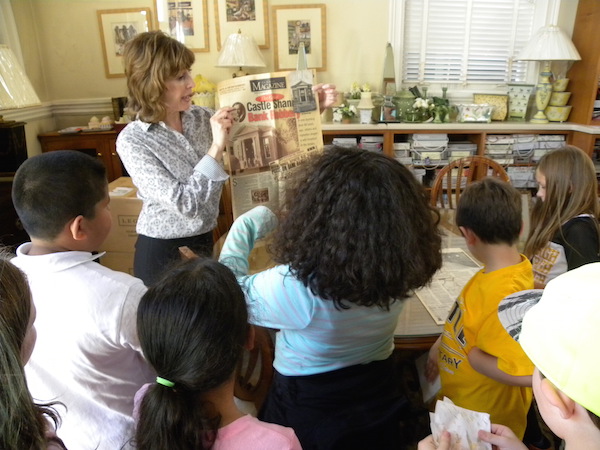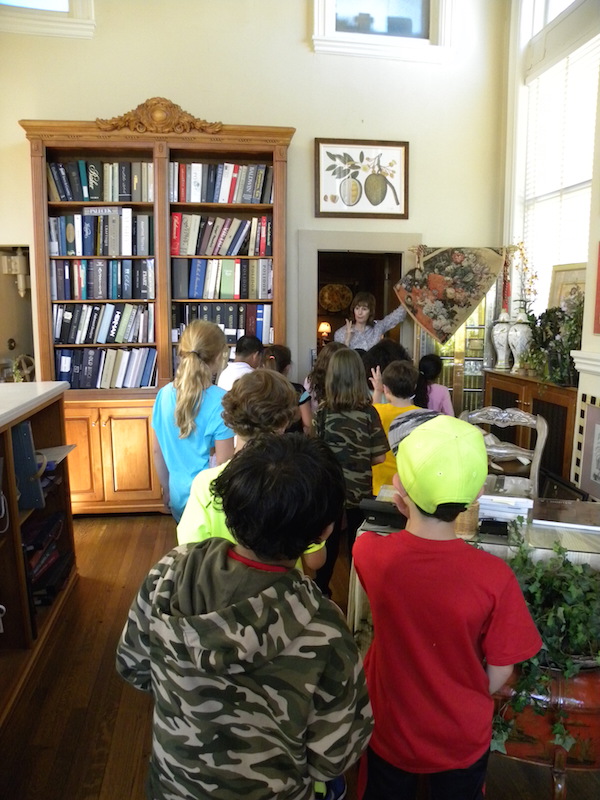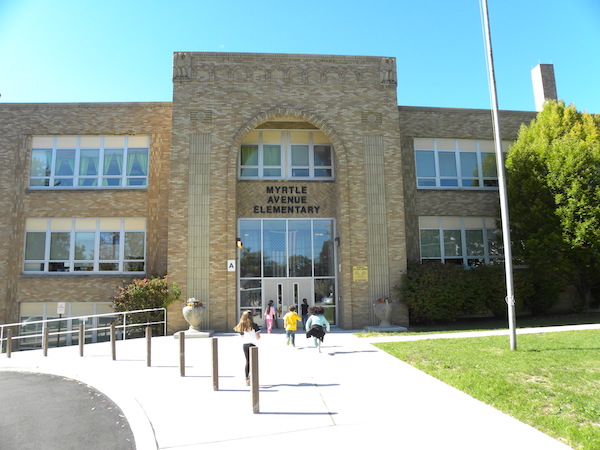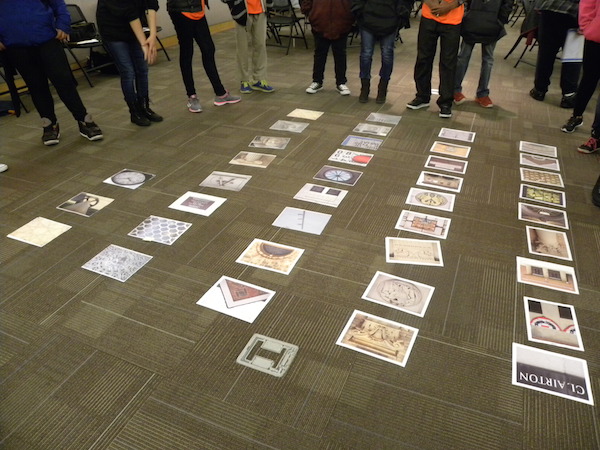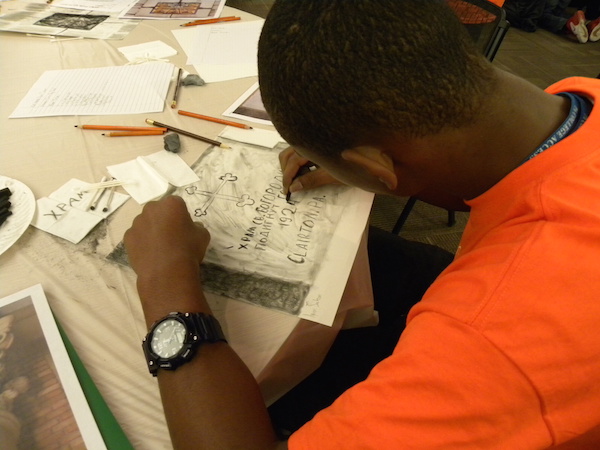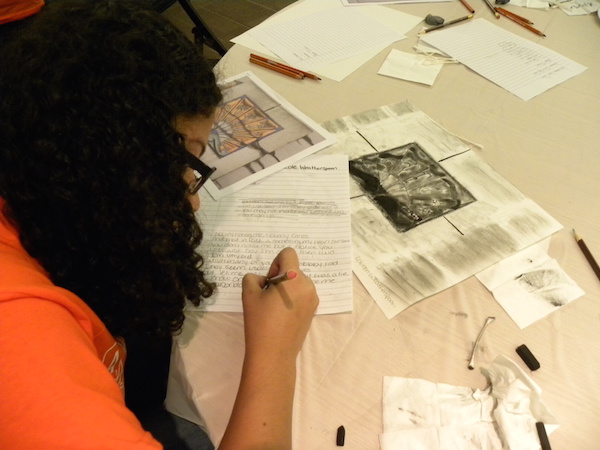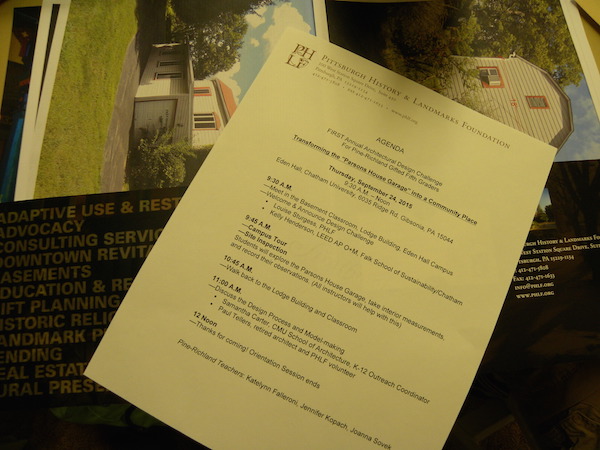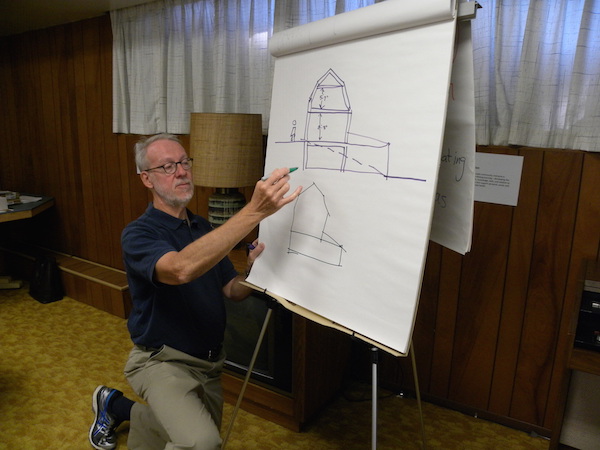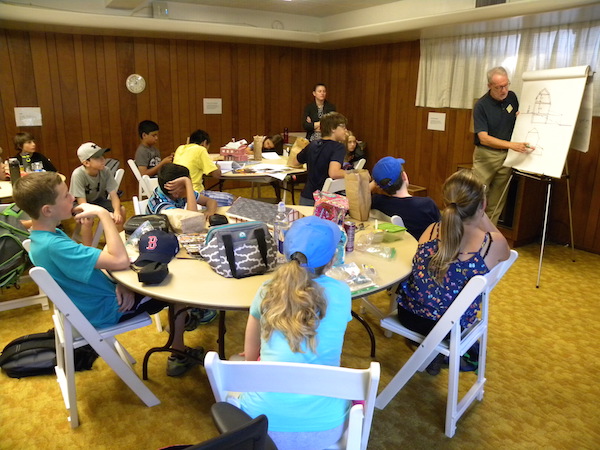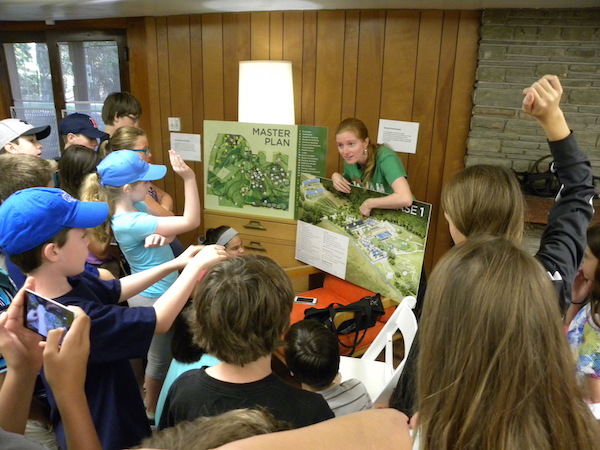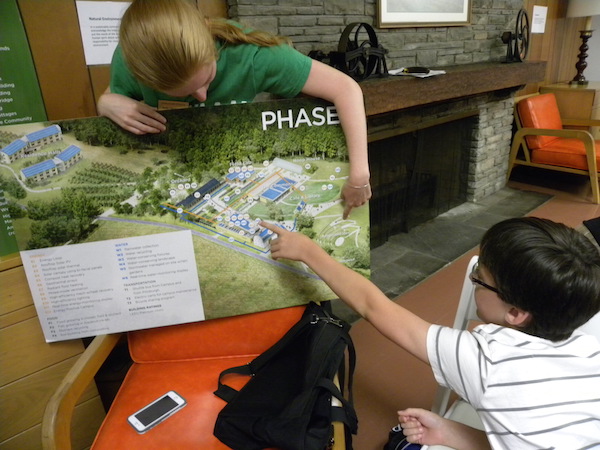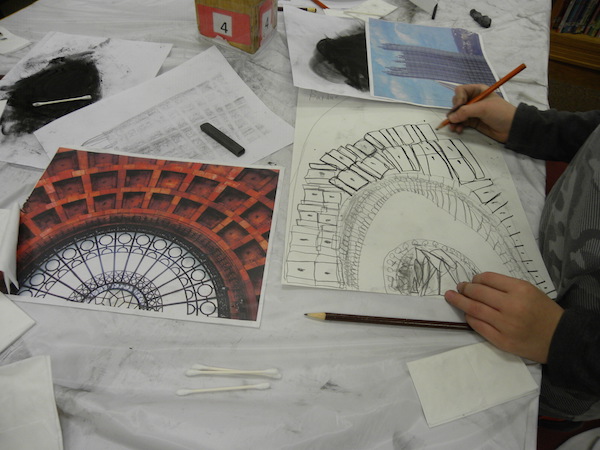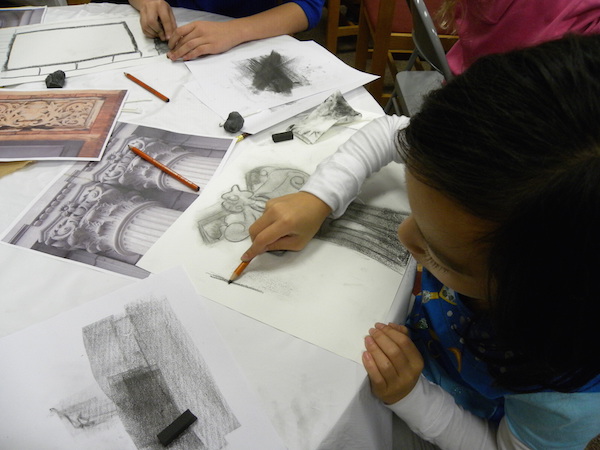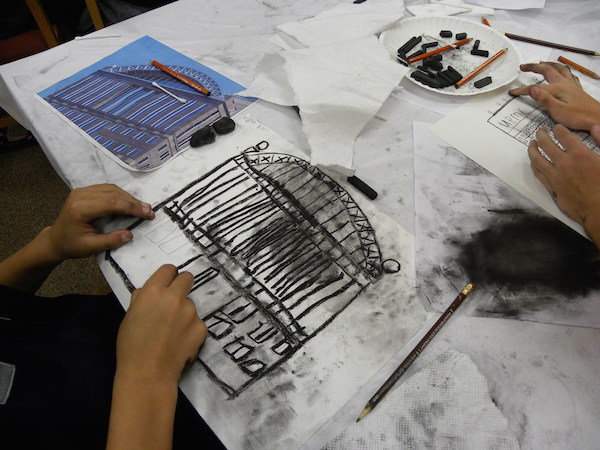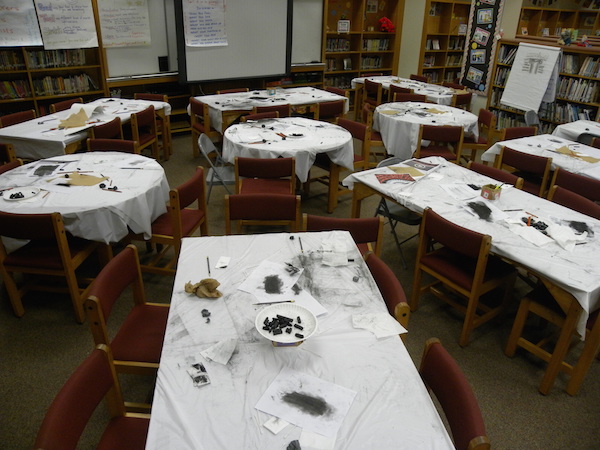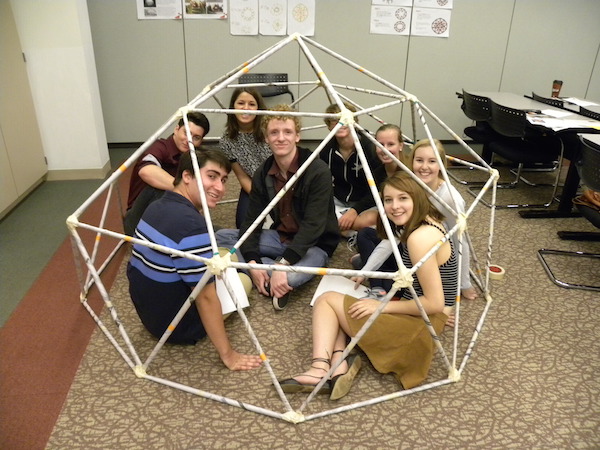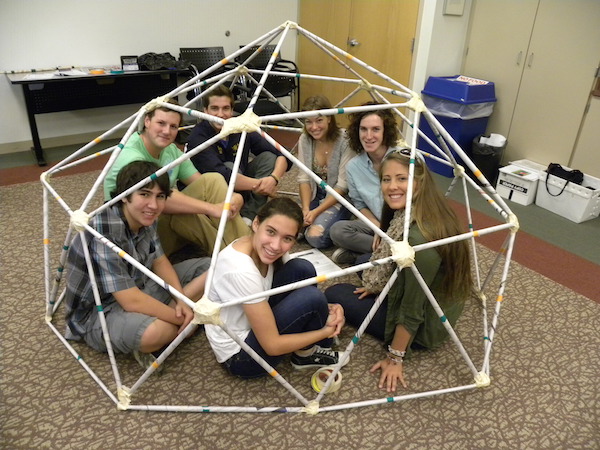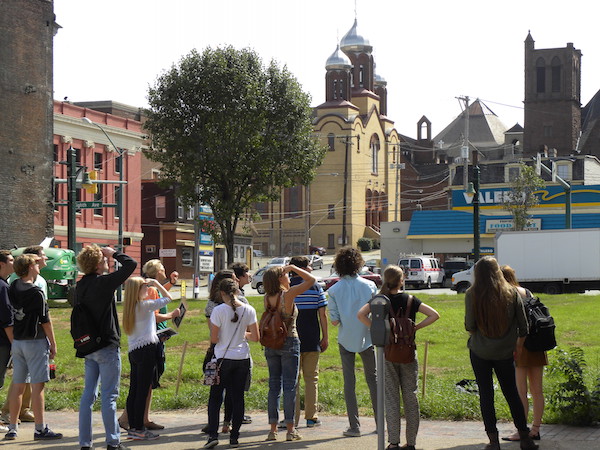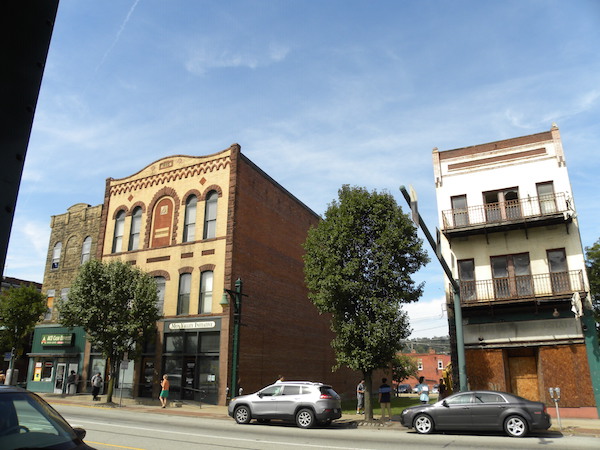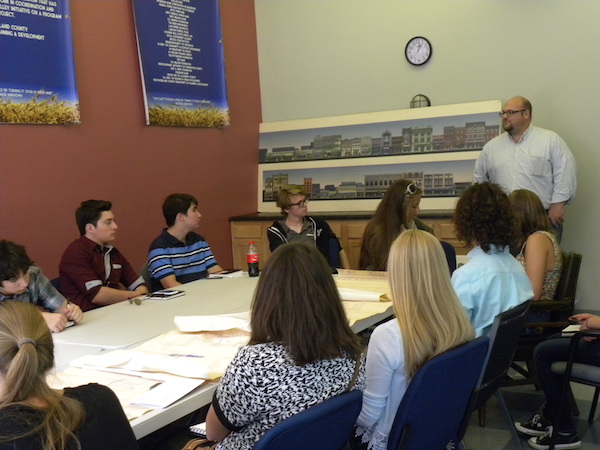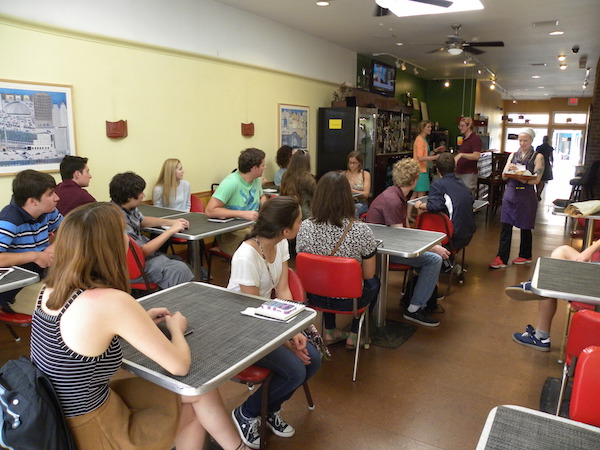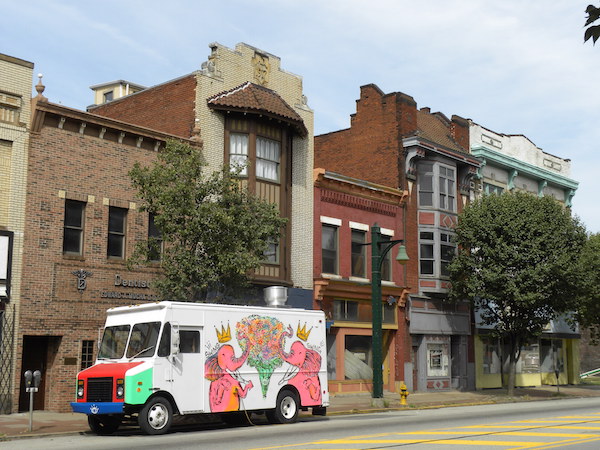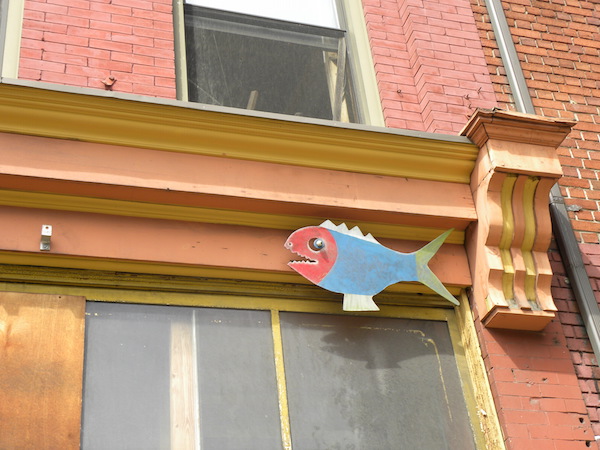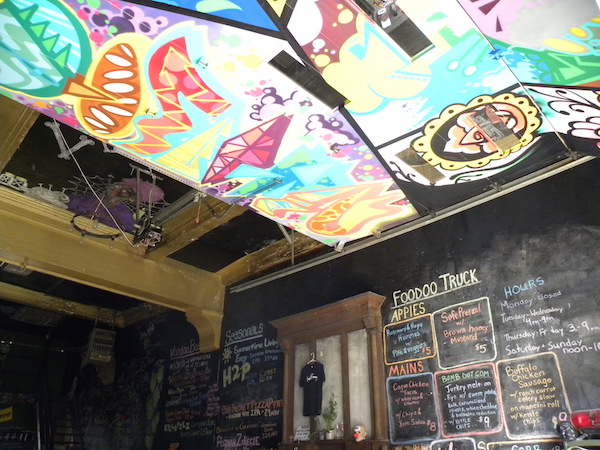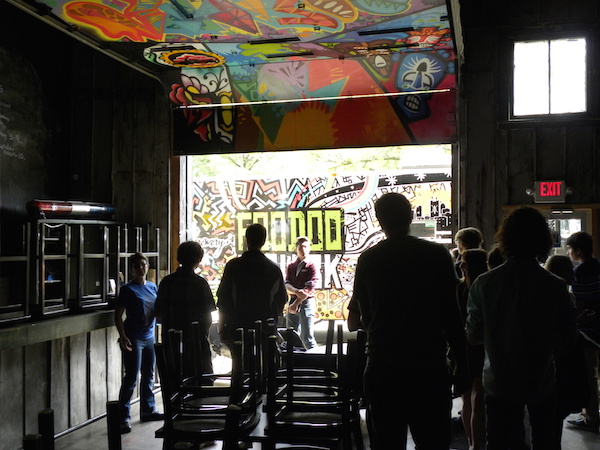
Latest News
-
PHLF Trustee Co-Authors Book on Bridges
Thank you for your work in teaching kids to love history, especially Pittsburgh history. Who knows, one day one of them might write a book. ––Inscription from Todd Wilson to PHLF’s Executive Director Louise Sturgess, in her copy of Pittsburgh’s Bridges
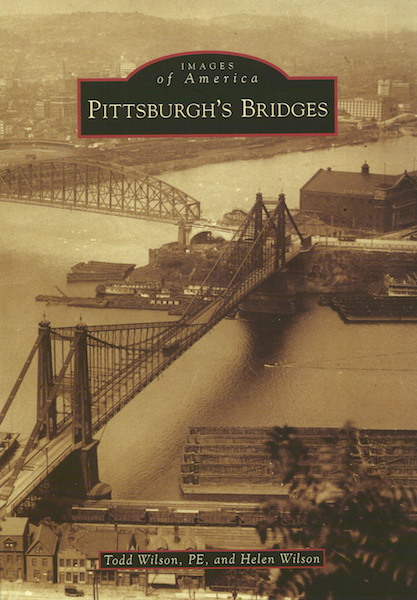
Pittsburgh’s Bridges
Todd Wilson, PE, and Helen Wilson are the authors of Pittsburgh’s Bridges ($21.99), the newest book in Arcadia Publishing’s Images of America series. Following a refreshing introduction discussing Pittsburgh’s bridges in the context of its topography and the historical development of transportation systems in the region, Pittsburgh’s Bridges launches into eight chapters with concise introductions: Point Bridges, Allegheny River Bridges, Monongahela River Bridges, Ohio River Bridges, Ravine Bridges, City Beautiful Bridges, Railroad Overpasses, and Footbridges. In 200 photo captions, the authors discuss the design, construction, and at times, demolition of 144 historic and extant bridges in our “City of Bridges.” They clearly explain how different bridge structures work, and describe how the design of Pittsburgh’s bridges often resulted in brilliant construction innovations and unique partnerships between engineers, architects, and the Municipal Art Commission.
Pittsburgh’s Bridges can be ordered from Arcadia Publishing or from any major online bookseller such as amazon.com, and is also available in local bookstores. Or you may order the book from the authors for the retail price of $21.99 plus $3.00 for postage and handling (book rate).
About the authors:
Todd Wilson is a trustee of PHLF and professional engineer at GAI Consultants, Inc. He first connected with PHLF in first and third grades when he entered the Bridge-Building Contest in our Hands-on History Festival at Station Square. Years later, he was selected as one of three scholarship recipients in 2002, based on his essay on Pittsburgh’s bridges, that ended with the statement: “I can safely predict that my whole life will be devoted to bridges or roads, especially in the Pittsburgh region.” Todd graduated from Carnegie Mellon University in 2006, organized the first and second annual Historic Bridge Conferences here in Pittsburgh in 2009 and 2010, and was named one of Pittsburgh Magazine’s “40 Under 40” honorees in 2011.
Todd’s mother, Helen, also is devoted to Pittsburgh history. A member of both PHLF and the Squirrel Hill Historical Society, Helen has researched and written about the significance of the Mary S. Brown Memorial-Ames United Methodist Church and Turner Cemetery at 3424 Beechwood Boulevard. A graduate of Carlow University, she worked as a teacher, editor, and writer for the Pittsburgh Public Schools.
The authors collaborated to produce a well-researched and fascinating illustrated history of a defining aspect of Pittsburgh. At a time when many historic bridges are endangered, this book informs the reader of the importance of the bridges that we cross every day, and by documenting their significance, encourages a preservation ethic.
-
Book Review: Pittsburgh Architecture in the Twentieth Century
By Peter Cormack
The Journal of Stained Glass, XXXVIII, 2014 [British Society of Master Glass Painters], 178-179.Albert M. Tannler. Pittsburgh Architecture in the Twentieth Century: Notable Modern Buildings and Their Architects. Pittsburgh: Pittsburgh History & Landmarks Foundation, 2013. Softcover, 276 pp., 321 col. and b/w ills. ISBN 978 0 9788284 9 3, $18.95.
The work of architectural historian Albert M. Tannler, Historical Collections Director of the Pittsburgh History & Landmarks Foundation, is well known to readers of this Journal. As the devoted chronicler of the city’s architectural heritage, he is something of a civic treasure worthy of statutory designation himself. The latest title from his pen (or computer) is a cornucopia of informative discussion and description, accompanied by numerous fine illustrations, revealing the remarkable wealth of modern buildings in this great American conurbation.
In the minds of many people who do not know the city, Pittsburgh’s identity is still indelibly marked by its industrial past, tellingly illustrated by a late 19th-century view in the ‘Eve of Modernism’ section of Tannler’s Introduction. The present-day city, however, has lost the pall of filthy smoke and soot overhanging and coating its buildings, as almost all the traditional manufacturing has disappeared or been transformed. Nowadays, one is very aware of Pittsburgh’s beautiful setting of surrounding hills and the fine rivers that run through it, and the city’s architecture has few rivals in the USA for historical interest and aesthetic distinction. Tannler’s focus is on the successive stages of post-1900 architectural modernism, broadly defined. He describes the buildings, gives fascinating short biographies of their designers and often adds socio-economic details of their up-and-down history to the present day. In his introductory writing, he also charts the dissemination of American and European modern styles through publications and influential institutions like the Pittsburgh Architectural Club.
The book covers all types of building. Glancing through the many illustrations, one is immediately struck by the diverse cultural influences prevalent among Pittsburgh’s architects––a natural consequence, of course, of its polyglot immigrant population. The Hungarian-born Titus de Bobula designed several churches that clearly demonstrate his awareness of Art Nouveau and Secessionist trends in central Europe. The First Hungarian Reformed Church (1903-4) in Hazelwood has echoes of Medgyaszay[1] in its rounded fenestration and determination to avoid historicist traits; it also has charming stained glass roundels (by an unidentified designer-maker), depicting heroes and heroines of Hungary’s Protestant history. De Bobula, Tannler tells us, was later under FBI surveillance and was described by his biographer as a ‘notorious architect and arms merchant’.
Leaded-light glazing is a conspicuous feature of much of the pre-First World War domestic architecture, sometimes in simple quarry patterns but occasionally in an idiom akin to Frank Lloyd Wright’s work. The Lydia A. Riesmeyer house (architect Richard Kiehnel, 1914) has particularly Wrightian windows and leaded light-fittings, partly in citrus-coloured opalescent glass combined with textured whites. Interior photographs show how such detailing was very much part of a total decorative scheme that embraced all exterior and interior elements. The suburban borough of Thornburg can boast a number of houses in which this kind of coordinated design approach was capably designed by architects influenced by Midwest, California and other regional idioms. S. T. McClarren’s splendid 1132 Lehigh Road is a later version of the 19th-century ‘shingle style’, given a quasi-expressionist sweep of horizontality and beautifully positioned on a sloping wooded site.
The Austro-German influence is a leitmotif throughout much of this book, evident in Kiehnel’s 1916-31 Greenfield School, the main doorway of which ‘quotes’ Herrmann Billing’s Mannheim Museum. As almost always happened in such cases, however, the European source gains a convincingly American identity in its new setting, aided by more ample contextual space and a generally more expansive scale for the buildings themselves. Tannler devotes a section of his book to the so-called Art Deco style (more properly called ‘Moderne’) with a description of one notable interior scheme given prominence. This is the Omni William Penn Hotel’s banquet room (1929) by the great Viennese-American designer Joseph Urban. It has all the luxuriant splendour of 1920s slient-era Hollywood move décor, blended with Wiener Werkstätte sophistication (Urban was the Vienna group’s US representative). Urban’s scheme has been conserved in recent years but, as the photographs show, it would benefit from a comprehensive restoration to reveal fully its original impact.
Appropriately, since Tannler has done so much to examine the topic in a scholarly way, a chapter on ‘American Gothic 1905-38’ is at the heart of the book. As well as featuring the masterpieces of Ralph Adams Cram (Calvary Church, 1905-7, Holy Rosary, 1926-31 and East Liberty Presbyterian, 1930-35), and of Bertram Grosvenor Goodhue (First Baptist Church (1909-11), which all have powerful glazing schemes by Charles Connick and his contemporaries, he illustrates and discusses Carlton Strong’s equally powerful Sacred Heart (1926-54), with glass by George and Alice Sotter, and (Welsh-born) William P. Hutchins’s St James Catholic Church, Wilkinsburg. The later is notable for its eighty windows by Wright Goodhue. Stained glass was recognized as an essential component of Modern Gothic buildings, even in secular structures such as Charles Z. Klauder’s soaring Cathedral of Learning on Pittsburgh University’s campus, built in the 1930s. Along with Klauder’s Stephen Foster Memorial and Heinz Memorial Chapel, it features glazing by Charles Connick. The Heinz windows, intricately blending biblical and American historical imagery, are in themselves well worth a pilgrimage to Pittsburgh.
Glass, although rarely if ever stained or leaded, increasingly dominates much of the later architecture illustrated, as the International Modern Movement increasingly imposed its ‘functional’ ideology and rejection of tradition on Pittsburgh’s building styles. Those in sympathy with this merciless reduction of an art form to a branch of engineering science may find much to please them in the illustrations and scholarly descriptions. Your reviewer’s tastes and prejudices will be all too evident, and it will be best of conclude this review by praising unreservedly the author’s exemplary research and fluent writing, and the equally exemplary enterprise of his publisher, PHLF, which has done so much to preserve and celebrate the architectural heritage of one of America’s most historic and beautiful cities.
[1] István Medgyaszay (1877-1969), Hungarian architect, trained at the Academy of Fine Arts, Vienna.
-
Walking Tours, Architectural Design Challenges, and Poetry & Art
Since the beginning of this 2015-16 school year, PHLF has offered 40 educational programs to various schools in Allegheny, Westmoreland, and Beaver counties. Through walking tours, architectural design challenges, Poetry and Art workshops, and other activities, PHLF staff and docents connect the built environment to classroom curriculum, making it relevant, meaningful, and engaging to students from pre-school through graduate school. Below is a photo gallery of several recent programs.
PHLF is grateful to BNY Mellon Foundation of Southwestern Pennsylvania, The Anne L. & George H. Clapp Charitable and Educational Trust, the Cindy & Murry Gerber Foundation, McSwigan Family Foundation, and Alfred M. Oppenheimer Memorial Fund of The Pittsburgh Foundation for contributing to its place-based educational programs that foster career awareness and help young people develop a sense of well-being as they explore and learn about the Pittsburgh region’s significant history and architecture.
-
PHLF Opposes Burgess Proposal on City Historic Designations
Pittsburgh City Councilman Ricky Burgess has proposed legislation that seeks to change how citizens can nominate houses, important buildings and landmarks, or even entire neighborhoods for designation as city historic landmarks or districts. Unlike National-Register designations, City historic designations establish a regulatory process for the review of the exterior appearance of all buildings that are designated (either individually or as part of a district).The Historic Review Commission (HRC) must review and approve all visible exterior alterations, including demolitions, new construction, and additions.
At its core, the proposed legislation, now before the City’s HRC, would make it impossible for the public to nominate individual buildings or landmarks for designation without the consent of the property owner. It would also require that a petitioner seeking to nominate a cluster of buildings for designation as a City-designated historic district attain 70 percent support—up from the current requirement of 25 percent—of the residents in the given area, which would make historic district designation much more difficult to attain.
We oppose this legislation because we believe it will stifle public interest in the nomination and designation of our significant historic architecture. Over the last five decades here in Pittsburgh, evidence has shown that the designation of historic buildings and the creation of historic districts is a positive way to help preserve, sustain, and build community. Allegheny West, the Mexican War Streets, and Schenley Farms, among many other historic districts, are desirable places to live today.
It has been our experience that City historic building designations and historic districts, when initiated through an educational, public process, not only help build pride in our communities, but improve and protect property investment, foster neighborhood identity, and promote economic development through recruitment of new businesses.
We also believe in working out practical solutions for designated structures, so that historic designation need not be a burden to property owners as they seek to enhance and preserve their living spaces.
While Councilman Burgess singles out historic preservation as something that should require owner consent, to our knowledge that has not been done regarding other zoning and planning requirements that the City has imposed on property owners.
Recently, Pittsburgh has been singled out as one of the eleven best cities internationally in which to live and work, wholly because of historic preservation. Councilman Burgess’ plan could deprive us of that international distinction. So we ask the question again: Why single out the City historic designation process, and not apply the same standard to the other requirements that the City imposes on owners?
-
West End Library Historic Landmark Plaque Dedication

PHLF Historic Landmark plaque unveiling, West End Branch Carnegie Library of Pittsburgh, 47 Wabash St., Alden & Harlow, architects, 1899
Although Andrew Carnegie did request in a letter that a branch library be established in Temperanceville, now Pittsburgh’s West End, there is no report that Andrew Carnegie ever visited the West End Branch of the Carnegie Library of Pittsburgh. However, he did visit 116 years after the branch’s opening. Re-enactor Fred Lapisardi portrayed the philanthropist and unveiled the PHLF Historic Landmark plaque to a delighted group of friends on September 19, 2015.
One of the first branch libraries to be built (only the Lawrenceville branch preceded this), the West End branch was designed by Alden & Harlow, Pittsburgh’s leading architectural firm at the time and designers of the Main Branch in Oakland.
The West End branch was dedicated on January 31, 1899, and its original collection numbered between 4,000 and 5,000 books. It is especially famous for being the birthplace of library storytelling. Librarian Charlotte Keith offered a “Story Hour” as an experiment, since kindergartens were beginning the practice. Youngsters at the branch liked the stories and soon the main Carnegie Library and others all over the United States instituted story hours for children.
PHLF thanks the Carnegie Library of Pittsburgh Board of Trustees and staff for their commitment to renovating this architecturally significant neighborhood branch library and others. PHLF also thanks the offices of City Councilwoman Theresa Kail-Smith and City Council President Bruce Kraus for the plaque purchase and placement.
-
Architecture Apprentices Explore Homestead
Nineteen high school students will spend the next few months developing their designs for a vacant lot at 307-09 East Eighth Avenue in Homestead, as part of an Architectural Apprenticeship program offered by PHLF and the Allegheny Intermediate Unit.
After building geodesic domes out of newspaper during the first full-day class on September 25, students explored Homestead’s historic main street. They analyzed their site and visited the Mon Valley Initiative, Baron Batch’s Studio A.M., the Tin Front Cafe, and Voodoo Brewery.
Architects Paul Tellers and Eric Fisher, and Samantha Carter from Carnegie Mellon University’s School of Architecture, are assisting in this year’s Apprenticeship, which is designed to help high school students determine if they want to study architecture, urban design, historic preservation, or community development.
PHLF is grateful to BNY Mellon Foundation of Southwestern Pennsylvania, the Cindy & Murry Gerber Foundation, and McSwigan Family Foundation for contributing to its place-based educational programs that foster career awareness and help young people develop a sense of well-being as they explore and learn about the Pittsburgh region’s significant history and architecture.
-
Falconhurst Development Underway in Wilkinsburg

Press conference announcing the start of the Falconhurst Development Project; Phil Ford, SOTA Construction; Macy Killinsky, PNC; Rich Fitzgerald, County Executive; Bill Schenck III, TriState Capital Bank; Michael Sriprasert, LDC; Johna Pro, PA DCED; Jane Miller, HUD; Arthur P. Ziegler, Jr., PHLF
PITTSBURGH – Allegheny County Executive Rich Fitzgerald announced the start of construction on the Falconhurst Development, an $11.5 million historic restoration and affordable housing initiative in the Hamnett Place neighborhood in Wilkinsburg.
The project, by Landmarks Development Corporation, a real estate development subsidiary of the Pittsburgh History & Landmarks Foundation, will bring to market 33 units of high quality affordable housing to the National Register-listed historic Hamnett Place neighborhood, by the end of 2016.
“We’re thrilled to see this project underway and are grateful for the work of PHLF and Landmarks on this endeavor,” said Fitzgerald. “This is a long-term commitment to Wilkinsburg and its residents. The work we are beginning today is a new partnership between historic restoration and new construction to create high quality affordable housing.”
This development marks yet another major preservation real estate undertaking in Wilkinsburg, where PHLF through its subsidiary will restore four architecturally significant buildings, including the stately Falconhurst Apartments building; a four-story brick condominium building, and will also build two new townhouses that fit harmoniously into the historic neighborhood.
This is an unusual housing development in that it incorporates a number of sites in and around Hamnett Place, thus creating strong anchors throughout the neighborhood,” said Michael Sriprasert, president of Landmarks Development. “We are grateful to our partners for their commitment to Wilkinsburg and to historic preservation.”
With this next phase of housing restoration, PHLF and its subsidiaries will have restored blocks of housing along Kelly Avenue and Mulberry Street, in addition to significant portions of Rebecca Avenue and Jeanette Street, in a neighborhood where PHLF and its subsidiaries have been active in restoring single family homes, apartment buildings, and beautifying blighted and vacant lots since 2005.
This work would not be possible without various partners and investors including the Pennsylvania Department of Community and Economic Development, the Pennsylvania Housing Finance Agency, Allegheny County, and PNC Bank, among others.
“We expect to complete the work by end of 2016,” said Mr. Sriprasert.
-
Guided Tours of Historic Oakmont Country Club
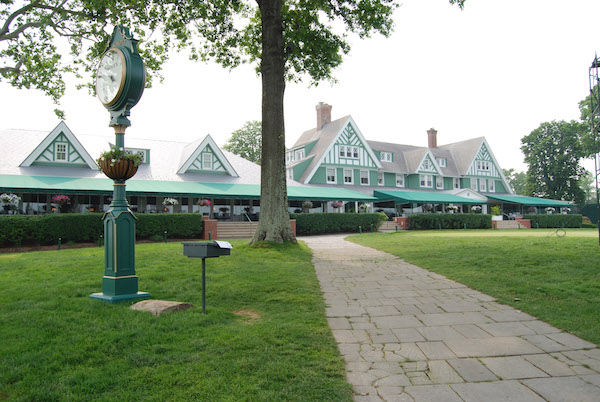 Four Mondays, from 9:00a.m. — 10:30a.m.
Four Mondays, from 9:00a.m. — 10:30a.m.- October 19 and 26
- November 9 and 23
$10 donation to The Fownes Foundation per participant. Children under 16, seniors over 65, and active duty/retired military are admitted free. Advance reservations required; limit of ten individuals per tour.
For reservations and further information, contact Oakmont Country Club (412-828-8000) or jlucas@oakmont-countryclub.org
Explore this National Historic Landmark golf course and clubhouse that has hosted 21 national championships featuring eight U.S. Open Championships since its opening in 1903. (June 2016 will be a record ninth U.S. Open for Oakmont Country Club.) The Country Club is located at 1233 Hulton Road, Oakmont, PA, 15139.
A golf historian will lead participants through the handsomely preserved 112-year-old clubhouse to view a wealth of architectural features, historic photographs, memorabilia, early 1900s golf equipment, championship trophies, and the original men’s locker room.
 Weather permitting, participants will also tour the legendary “inland links” golf course and see first-hand the extraordinary vistas, narrow fairways, iconic “church pews,” and some of the other 200-plus sculpted sand bunkers.
Weather permitting, participants will also tour the legendary “inland links” golf course and see first-hand the extraordinary vistas, narrow fairways, iconic “church pews,” and some of the other 200-plus sculpted sand bunkers.At the conclusion of the tour, participants may test their putting skills on one of the world-famous Oakmont putting surfaces and browse through the selection of apparel and equipment in the renowned Golf Shop.
Additional details:
- Please arrive at Oakmont Country Club by 8:45a.m.
- Casual attire (no jeans or denim please) and comfortable walking shoes with flat sole. Coat or jacket depending on weather forecast. Umbrellas will be provided.
- Disabled access available.
- Photography is permitted.
- Tours are sponsored by the Fownes Foundation, a 501(c)(3) organization dedicated to the restoration and preservation of nationally recognized, historically significant golf sites.

